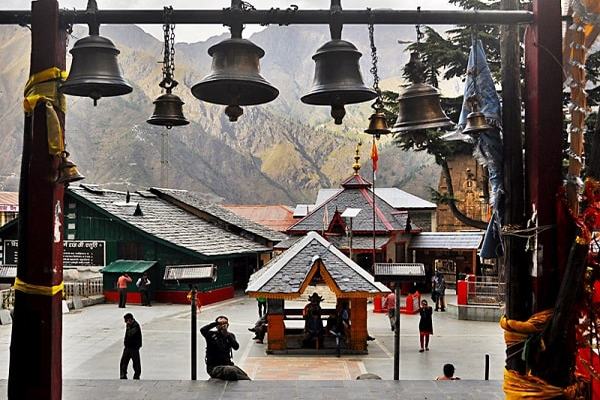Chamba in Himachal Pradesh is a blessed country to count the Trinity of Gods, Brahma, Vishnu and Mahesh (Shiva) among their permanent residents. Where Manimahesh peak (5775 meters altitude) is believed to be the adobe of Shiva, Gaddis, the local herdsmen who inhabit the area hold a belief that the waterfall at Dhancho on the way to Manimahesh Lake Trek (4115 meters altitude) is the adobe of Vishnu and the mound that overlooks the Bharmour is a dwelling place of Brahma himself.
Starting from Chamba town, every year the Manimahesh
yatra begins on Janmashtmi and ends on Radha Ashtami. Believers’ counts it as
one of the holiest journeys when the lord Shiva chooses to stay in this world with his consort on Manimahesh peak.
People start visiting the area from May itself and feel great
full to have been able to make the arduous journey to get a close glimpse of
the sacred peak and bathe in the holy lake. Every year, almost seven lakh
people visit Manimahesh, driven by their inner will to make it, despite the
odds.
From Chamba, a pilgrimage to the Mount Manimahesh can be easily
be completed in three days, those with less time at hand can do it aster and
the more adventurous can spend anywhere between a week to 10 days out covering
the entire distance on foot without using any motorable transport in between.
Day one of Manimahesh Lake Trek, Chamba to Bharmour:
Starting from Chamba, one has to head for Bharmour, a 65
km distance, where the journey can be broken to admire the amazing stonecraft
to the Chaurasi Temple Complex. A tale about the magnificent complex is that 84
yogis (holy sages) visited Brahmpura during the reign of Sahil Verman, the
local King of the valley. Pleased with the king’s hospitality, the sages
blessed him with 10 sons and a daughter.
In honor of the sage the King laid the foundation of the
temple complex that has come to be known as Chaurasi (84). The King with his
daughter Champavati moved lower into the valley and laid the foundation of
Chamba, named after his daughter.
There are regular taxi and bus service available to
Bharmour and accommodation are available for night stay in the town.
Day 2 of Manimahesh Lake Trek, Bharmour – Hadsar –
Dhancho:
Pilgrims headed for Manimahesh Kailash do make an early morning
visit to the temple of Bharmani Devi, the presiding goddess of Bharmour,
located at top of a peak. A short 13 km journey from Bharmour to Hadsar is the
end of the road journey and the start of the trekking route. Many pilgrims walk
barefoot to Dhancho (6 km). Free night accommodation and free food (langars)
are organized by many organizations from pilgrims during the yatra days.
Day 3 of Manimahesh Lake Trek, Dhancho – Manimahesh –
Hadsar- Bharmour- Chamba:
For early starter the journey from Dhancho to the Manimahesh
and back to Bharmour or Chamba can be done in a day. Those who want to be in
the god's company for a longer time can camp by the lake for a day or more to soak
in the rarefied air.
There are two routes that the pilgrims can take. The
older route is from the lift side of the stream and is very steep and exhausting.
A new track which is accessed by mule is longer but not so tiring. Stiff cliffs, deep ravines, virgin pasture
lands, eye-catching waterfalls, a receding tree line, and other beautiful sights
grip the traveler on the route. Gauri Kund, a small lake on the route is
believed to be the bathing place of Goddess Parvati. Nearby the Shiva Kalotri,
a spring with healing waters is believed to originate from Shiva feet itself.
After a short ascent, the first glimpse of Manimahesh
Peak and the lake at its feet have the pilgrim hold a prayer to be Lord’s beauty
and grace. Pilgrims take a holy dip in the lake, paying obeisance at a roofless
temple and can stat the journey back to Dhancho to reach Hadsar easily. By a
vehicular journey, one can reach Chamba on the same day from Hadsar.
The Manimahesh Peak is believed to be an unclimbed peak. Some who have dared to do so are said to not have come back. The state government makes special arrangements for pilgrims every year when tents, facilities for food, transport, medical care, and mobile phone connectivity are set up for the safe pilgrimage to Manimahesh Lake.







